817 Search Results for praactical teaching
October 4, 2012
by Carole Zangari -
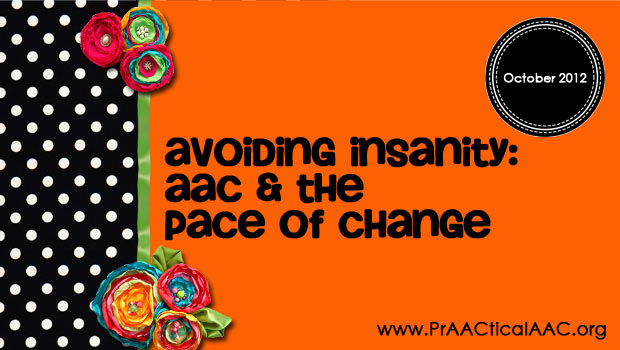
Although the field of AAC emerged only in the last few decades, the notion of communicating in alternative ways is centuries old. In classical times, the use of manual communication by deaf individuals was referred to by Plato and documented in Europe during the Middle Ages. In North America, American Indian Hand Talk evolved over generations to allow cross-cultural communication between speakers of diverse languages. As a clinical/educational field, AAC has been described as evolving through a “bottom-up” mechanism. Individuals with congenital conditions that prevented the development of intelligible speech invented their own communication systems long before teachers, therapists, and clinicians formalized instruction in alternative modes of expression. AAC users growing up in the forties and fifties tell of communicating through grunts, vocalizations, “air writing,” and eye movements, which, though effective in some contexts, were maddening in their limitations. Individuals who were fortunate enough to have access to habilitative and... [Read More...]
September 15, 2012
by Robin Parker -
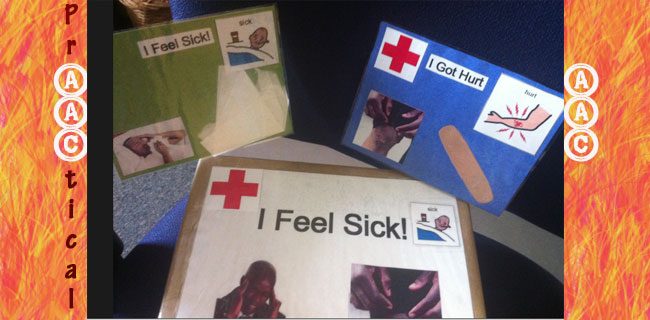
We were looking over the great hospital resources from Patient Provider Communication Forum, Central Coast Children’s Foundation, Dr. Bronwyn Hemsley, and Widgit Software that Carole wrote about and realized that not everyone automatically knows how to talk about pain, illness and injury. We often need to teach the expression of these concepts. We use various types of modeling and create Boxes or Drawers that have items (i.e., bandaids, antiseptic, washcloth, ice buddy, etc) to ‘help with Cuts/Scrapes’ (or any other illness). We have had some fun and lots of practice using these apps to also help the learning process. 5 Apps To Learn and Practice Talking About Pain, Illness, & Injury Don’t forget to model, play, and use the apps often in the teaching process so when they are really needed you will see spontaneous communication and language. Toca Doctor– learning about injury and sickness through fun noncompetitive challenges that involve ‘healing’ the damaged part.... [Read More...]
September 2, 2012
by Robin Parker -
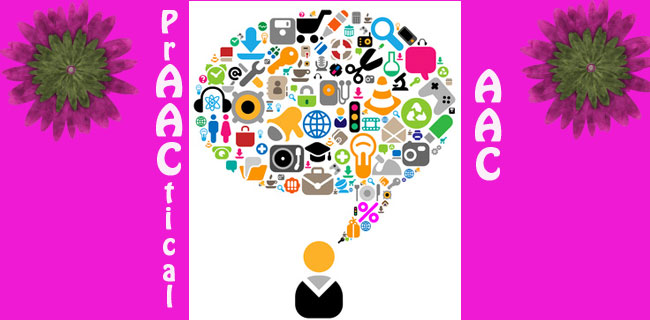
We have recently been surprised (ok, shocked) by the absence of communication supports in educational settings that are supposed to be supporting learners with significant communication challenges. To be even more specific and blunt, the students do not have functional spoken speech. They can’t speak to let you know: what they need, what they don’t need or want, how they feel, what they see, what interests them, what questions they have, what they like and don’t like, when they really reallywant something, etc., etc. etc. And, trust us, they do need to say all of these things. If you work with anyone who does not use spoken speech and we mean ANYONE, they deserve the basic right to communicate with you. Our PrAACtical AAC Absolute A’s: AAC displays need to be accessible ALLOVER. There is no special ‘communication time.’ Communication teaching is ALL the time in authentic situations.... [Read More...]
September 2, 2012
by Carole Zangari -
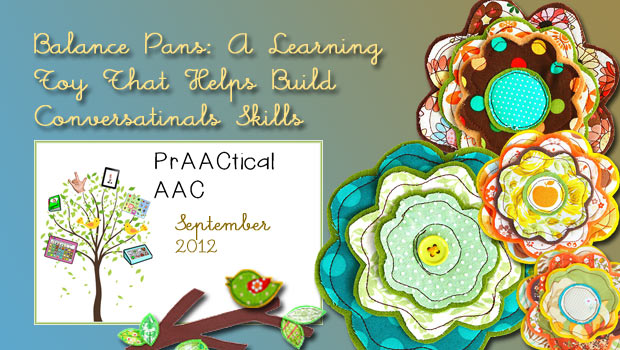
We’ve been thinking a lot lately about the social skills of some of our AAC friends who are not quite fitting in the way that they would like. SLPs frequently work on social interaction skills with learners on the ASD spectrum, but it’s not something that we always think about with learners who have cerebral palsy, apraxia, or other developmental disabilities. – The idea of using a balance scale as a metaphor for balance in conversational turns is intriguing and one we’ve explored a bit. In this video from Autism Teaching Strategies, Joel Shaul demonstrates the strategy and discusses it relative to turn-taking (Click here for Part 1 and click here for the second video). That makes sense for a lot of learners who don’t respond to non-obligatory situations as well as they could. – We’ve also used it for helping people with AAC see how their utterances compare to... [Read More...]
August 5, 2012
by Carole Zangari -
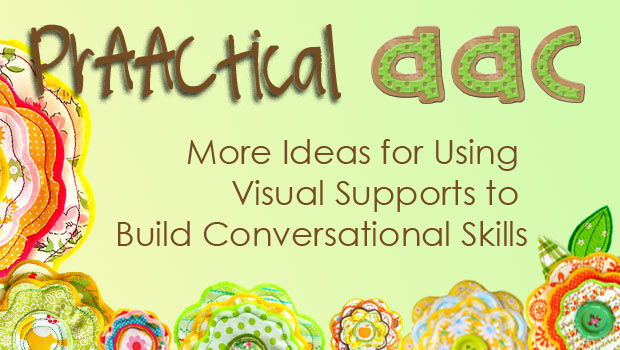
Cohesion is a tough concept for many of our learners who are developing their AAC skills and struggling to build relationships. In this week’s featured video, Joel Shaul, from Autism Teaching Strategies, discusses how to use two metaphors for building cohesive conversations. One is the idea of links in a chain and the other is the girders of a building. Of course, we are big fans of the use of visual supports whenever we talk and teach. — Although the focus here is learners with ASD, we’ve used this and similar strategies many kinds of learners. Hope you enjoy this informative video. – – – –
August 1, 2012
by Carole Zangari -
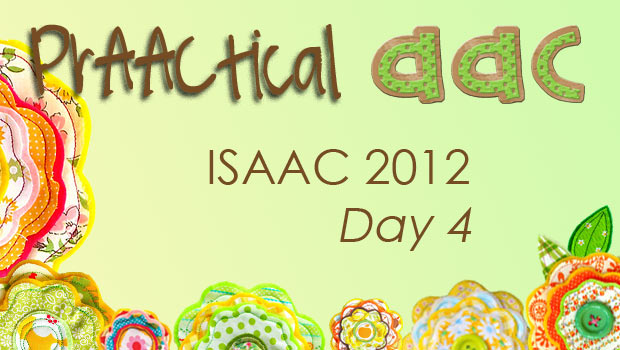
Lots more ISAAC fun to tell about in Day 4! — My day started with a shorter version of the presentation on the preschool core language curriculum that I’m working on with Lori Wise. You can see the handout for that presentation here. — There is some fascinating work going on in the area in supporting the emotional development of children with AAC needs. Dr. Sarah Blackstone and colleagues talked about the developmental sequence in which emotional competence emerges. They are working on an observation and interview tool used to collect information on a child’s emotional development and the caregiver strategies. They are planning a pilot study with the tool they are developing and actively looking for volunteers to use this tool with children who are developmentally between 12 months and 10 years. – Terry Foss and and Jane Korsten did an interesting presentation called Promptology 101 where they reviewed some... [Read More...]
July 31, 2012
by Carole Zangari -
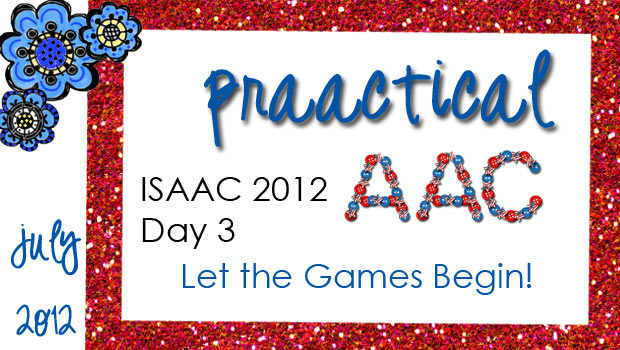
Today was the first day of the main conference and it did not disappoint. The conference began with a plenary session that was moving beyond words. For me, the highlight was Peter Yarrow, of Peter, Paul, and Mary fame joined in song by conference co-chair Katya Hill, and Snoopi Botten, who sings using AAC. Hearing the three of them sing songs like Puff the Magic Dragon and others made popular in the civil rights area did much to reinforce the notion that communication is a basic human right. The ongoing struggle to make that right accessible to all was highlighted in a speech by ISAAC president, Erna Alant, of South Africa, who rekindled our commitment to this effort. Another wonderful aspect of the plenary was the parade of nations, AAC style. Snoopi sang as the flags of the ISAAC members’ countries were displayed, and there were rousing cheers for all... [Read More...]
July 29, 2012
by Carole Zangari -
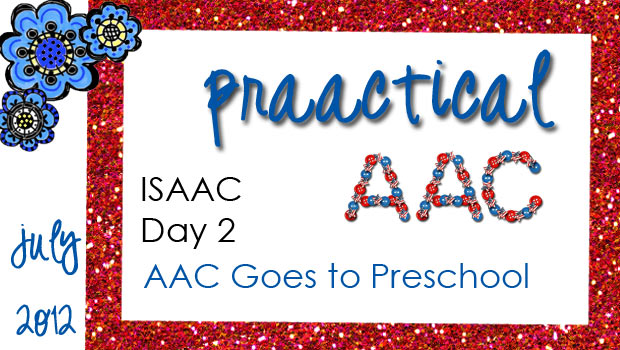
It was another wonderful day here in Pittsburgh at the 15th Biennial ISAAC Conference. It was a special day for me because I had the opportunity to speak about a really fun topic, core vocabulary teaching for young children with AAC needs. It was certainly a group effort! A talented graduate student of ours, Tathiane Paiva, and I shared a framework for developing a curriculum to teach core language in preschool classrooms, and used the curriculum I developed with Lori Wise (special educator and literacy specialist with UM NSU CARD) as an example. The basic principles behind the approach we shared are listed below. – •Language and literacy learning happen all day long. •Children learning AAC need high-quality instruction to learn and use basic vocabulary. •Children learning AAC need frequent opportunities for learning and practice. They need dozens of carefully planned opportunities to use their new words each day. •The focus is on... [Read More...]
July 20, 2012
by Robin Parker -
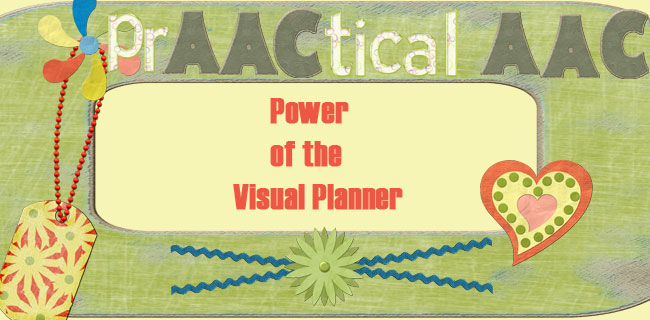
We need to continue to talk about scheduling…..especially as we talk about tools for positive behavioral supports. We know that having monthly, daily, and mini-schedules make us ALL feel more competent and calm. We have written a lot about visual schedules and visual schedule resources because we have seen schedules reduce or eliminate so many behavior challenges. They have helped with transitions, wandering away during activities, activity completion, asking repetitive ‘‘when are we going ________ questions, and with meltdowns during a less preferred activity. We also continue to write about schedules because there are still myths suggesting schedules might hinder independence when exactly the opposite is true. We personally continue to use a combination of no-tech to high-tech visual schedules, but we are loving mobile schedules especially during the summer when we are traveling and moving around from place to place even more frequently than usual. We gathered together... [Read More...]
July 14, 2012
by Carole Zangari -
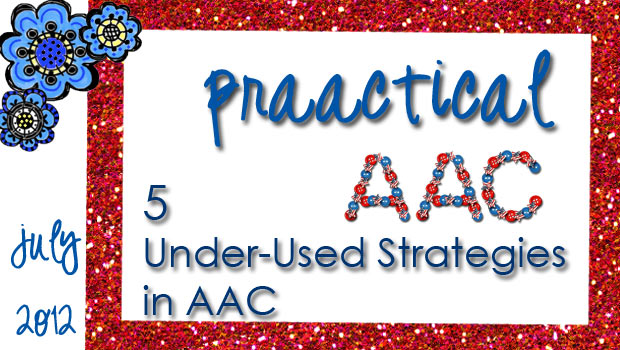
1. Partner-assisted scanning (PAS) offers great flexibility and spontaneity. Don’t want to take your SGD to the beach? A print-out of the screens and PAS is a great option. Missing key messages for the trip to the doctor’s office? A minute of brainstorming and the use of PAS may just save the day. No way for your client to access her device once she’s in bed? A communication board/book and PAS just might do the trick. – 2. Voice banking: For people are likely to lose their speech due to a degenerative disease, like ALS, the option of saving samples of their speech and having it digitized for future use seems to hold great appeal. We’d love to see more SLPs familiarize themselves with this strategy and the tools to implement it, so that this option is more widely used about individuals whose speech is deteriorating. – 3. Qualitative rating... [Read More...]









